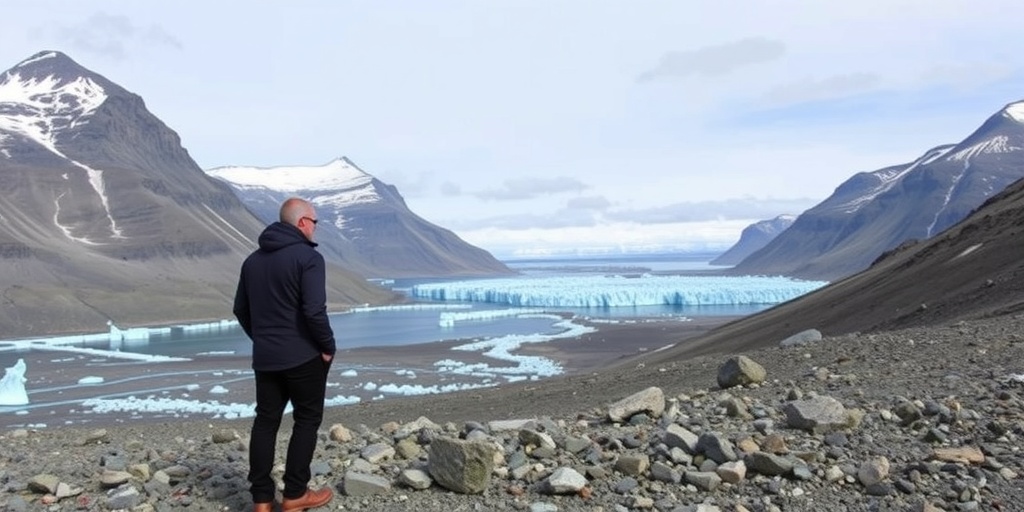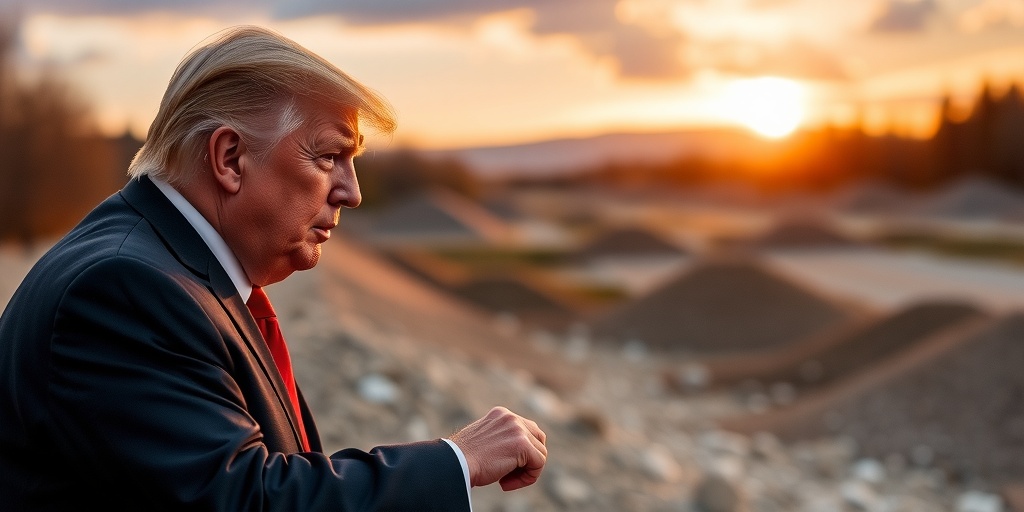Now Reading: “Greenland’s Minerals: Unveiling the Hard Truth Behind the Promise”
-
01
“Greenland’s Minerals: Unveiling the Hard Truth Behind the Promise”
“Greenland’s Minerals: Unveiling the Hard Truth Behind the Promise”

Exploring Greenland’s Untapped Mineral Wealth Amid Challenges and Opportunities
In recent years, Greenland has emerged as a focal point for global mineral exploration, drawing interest from both investors and governments eager to tap into its vast mineral resources. More than a decade ago, Canadian miners on the search for diamonds in western Greenland stumbled upon a striking geological feature they dubbed White Mountain, which was later identified as a rich deposit of anorthosite—a mineral with diverse applications in various industries, including paints and flame retardants. The potential of this deposit, stretching several miles, indicates the possibility of considerable profits, according to Bent Olsvig Jensen, the managing director of Lumina Sustainable Materials, the company currently overseeing mining operations in the area.
Although Lumina is backed by European and Canadian investors, Jensen highlights the difficulties involved in converting these mineral deposits into lucrative ventures. Greenland’s Arctic conditions severely limit the mining season, often hampered by harsh weather, including fierce winds and extreme cold that can ground helicopters and freeze machinery. The operational challenges are compounded by the island’s limited infrastructure—fewer than 100 miles of roads and a small population of around 56,000, resulting in a precarious labor market and few functional ports.
This scarcity of resources has not deterred interest from influential parties, especially from the United States, where President Trump previously expressed a desire for the U.S. to increase its presence in Greenland and secure access to its mineral wealth. This interest is fueled by the global competition for rare earth minerals, which play a pivotal role in high-tech industries. As China dominates the supply of critical minerals and restricts exports to the U.S., the American government has explored high-pressure tactics to secure foreign mineral assets, including a recent but failed agreement with Ukraine focused on critical minerals.
Similarly, the European Union has sought strategic partnerships, moving to secure mineral resources critical for green technologies. Recently, the EU inked a deal with Rwanda, an effort that underscores its fixation on minerals vital for technological growth, despite concerns about Rwanda’s geopolitical stability.
As interest intensifies, so too does the environmental debate surrounding mining in Greenland. Many inhabitants advocate for increased mining to foster economic independence from Denmark, which has historically provided substantial financial support. However, there is considerable resistance driven by environmental concerns, particularly as climate change poses direct challenges to Greenland’s fragile ecosystem. The warming Arctic is threatening to alter the landscape, making mineral extraction more feasible but also raising alarms about environmental degradation.
The current political climate is critical. Greenland’s governing party, which won the recent elections on an environmentally protective platform, halted one of the most promising mining projects in the region. As elections loom on March 11, political discussions are increasingly shifting toward environmental stewardship and independence from Denmark, coupled with a cautious approach to industrialization.
Local opposition to mining projects is not without merit. For instance, in Narsaq, a community close to a proposed rare earth mine, residents have voiced fears of radioactive contamination linked to uranium, which often coexists with rare earth minerals. With historical grievances about previous mining operations leaving many Greenlanders feeling exploited, there is a palpable desire to safeguard the environment, viewed as a part of their cultural identity.
The challenges for prospective mining companies remain substantial. Even Amaroq Minerals, which successfully extracted its first gold in November, recognizes the logistical hurdles of operating in such a remote region. The former Danish mining ventures have left a legacy of shuttered operations, with the locals often feeling the burden of exploitation without corresponding benefits.
Amid these challenges, both Greenland’s mineral potential and the international interest it generates could pave the way for a new era of economic development. Yet, as environmental groups continue to push back against heavy industry on the island, the path forward will surely require balancing economic ambitions with environmental responsibility.
For investors and legislators, Greenland’s mineral wealth represents a tantalizing prospect, but it also highlights a complex landscape of geopolitical maneuvering, local concerns, and the global rush for critical raw materials. As the dialogue continues, both here and abroad, the future of Greenland’s mining industry will depend on careful navigation of these intertwined issues.
Stay Informed With the Latest & Most Important News
Previous Post
Next Post
-
 01New technology breakthrough has everyone talking right now
01New technology breakthrough has everyone talking right now -
 02Unbelievable life hack everyone needs to try today
02Unbelievable life hack everyone needs to try today -
 03Fascinating discovery found buried deep beneath the ocean
03Fascinating discovery found buried deep beneath the ocean -
 04Man invents genius device that solves everyday problems
04Man invents genius device that solves everyday problems -
 05Shocking discovery that changes what we know forever
05Shocking discovery that changes what we know forever -
 06Internet goes wild over celebrity’s unexpected fashion choice
06Internet goes wild over celebrity’s unexpected fashion choice -
 07Rare animal sighting stuns scientists and wildlife lovers
07Rare animal sighting stuns scientists and wildlife lovers



















